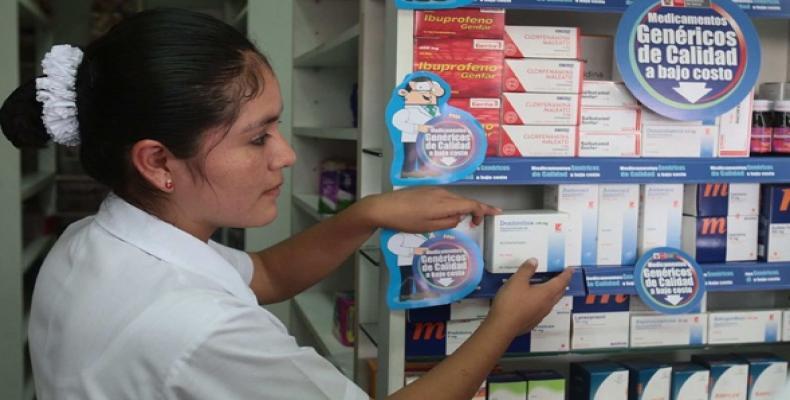Lima, June 6 (teleSUR-RHC)-- Civil Society organizations dealing with health care issues have called for research in Peruvian provinces where they estimate the availability of generics is lower. If that is the case, then the large percentage of poor Peruvians who live outside of Lima are having to pay unaffordable prices or get by without the medicine they need.
Studies into the matter, however, have only been done in Lima. With a struggling public health sector that is not able to provide necessary subsidized medicines to those who need them, many Peruvians turn to private pharmacies to buy their drugs.
However, a study surveying 9,000 pharmacies in Lima in 2014 shows that at least half of them only sell non-generic medicines that on average cost 160 percent more.
A national policy approved in 2009 recognizes that the state must support the availability of non-brand name medicines to promote competition in the market, lower prices, and provide consumers with a generic option. However, such a mandate is not implemented for private pharmacies.
Javier Llamosa from the International Action for Health and RedGE organizations expressed the need to have studies about such availability of generics in the provinces of Peru. He also helped supervise the 2014 Lima study and argues that “this market moves based on supply and demand. Since there are no obligations, the private market offers the medicine that will be the best for them. In other words, [the medicine] that is the most lucrative. And those interests do not fit with the public interest.” Llamosa concludes that “such situation is a problem and for that reason we see gaps specially with the issue of prices."
Citizens agree with the study done in Lima. Ulises Uriarte from the neighborhood of Jesus María in the capital suffers from bronchitis, but he often has trouble finding generic versions of the Biobrocol medicine he needs. He explained that he looked in many pharmacies but was unable to find the medicine.


